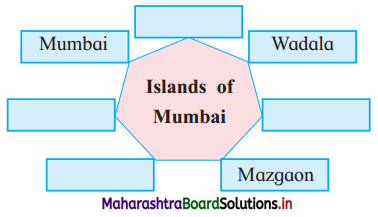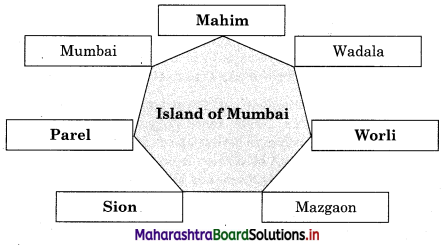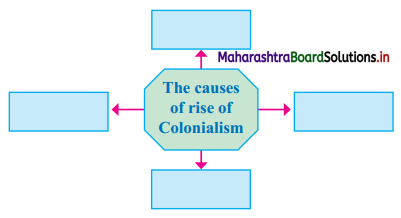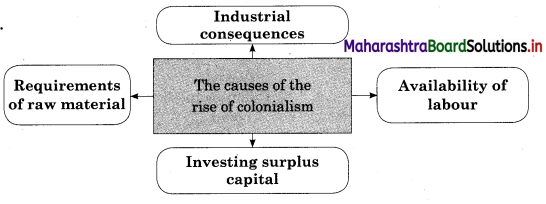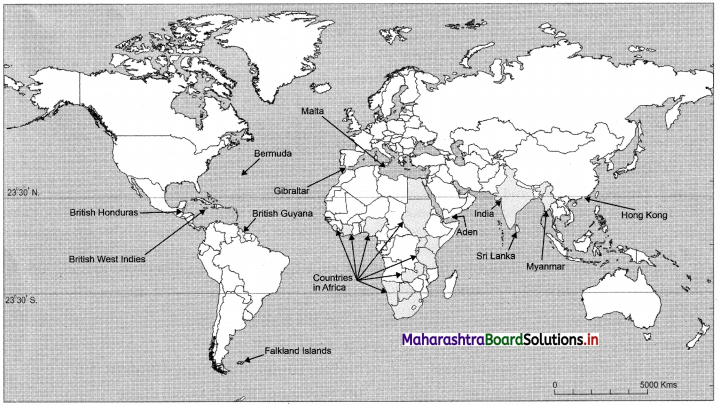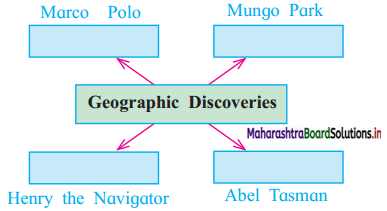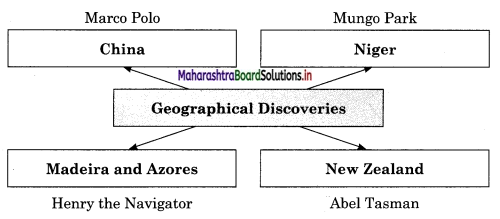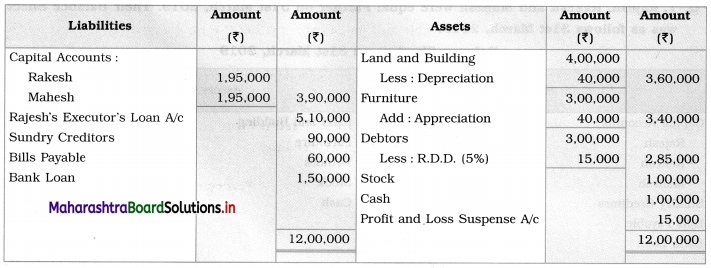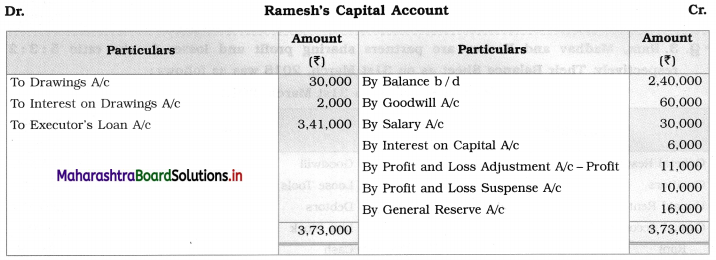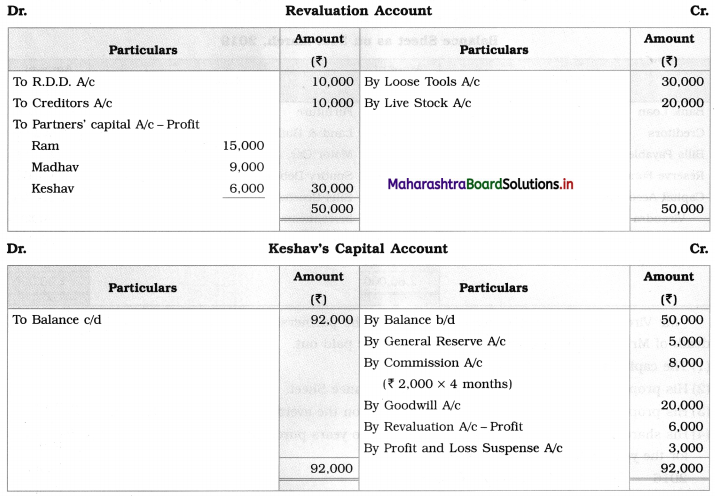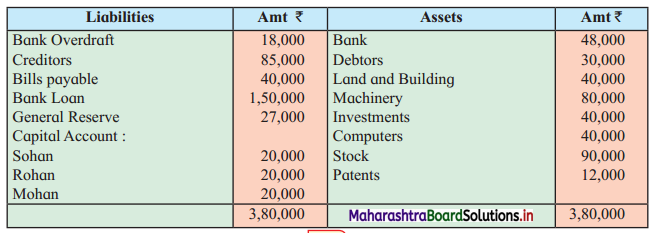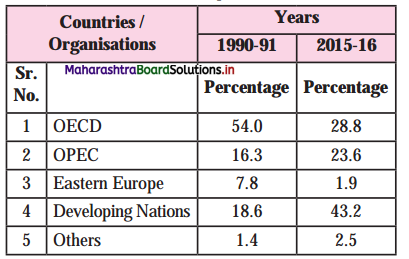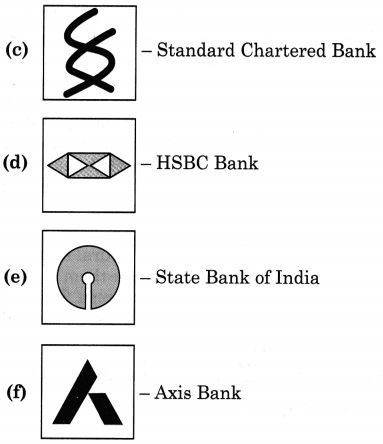Std 12 History Chapter 7 Question Answer Decolonisation to Political Integration of India Maharashtra Board
Balbharti Maharashtra State Board Class 12 History Solutions Chapter 7 Decolonisation to Political Integration of India Textbook Exercise Questions and Answers.
Class 12 History Chapter 7 Decolonisation to Political Integration of India Question Answer Maharashtra Board
History Class 12 Chapter 7 Question Answer Maharashtra Board
1A. Choose the correct alternative and rewrite the statement.
Question 1.
In 1946, under the leadership of the movement of ____________ ‘Civil Disobedience’ was launched in
Goa.
(a) Dr. Ram Manohar Lohia
(b) Dr. T.B. Kunha
(c) Dr. P.P. Shirodkar
(d) Dr. Ram Hegde
Answer:
(a) Dr. Ram Manohar Lohia
Question 2.
Hyderabad’s struggle of freedom was led skillfully by ____________
(a) King Hari Singh
(b) Swami Ramanand Tirth
(c) Pandit Mahadevshastri Joshi
(d) Keshavrao Jedhe
Answer:
(b) Swami Ramanand Tirth
![]()
Question 3.
The princely states in India were merged in India mainly through the efforts of ____________
(a) Jayantrao Tilak
(b) Sardar Vallabhbhai Patel
(c) Pandit Jawaharlal Nehru
(d) Dr. T.B. Kunha
Answer:
(b) Sardar Vallabhbhai Patel
1B. Find the incorrect pair from group ‘B’ and write the corrected one.
Question 1.
| Group ‘A’ | Group ‘B’ |
| 1. Merger of the princely state of Hyderabad | Swami Ramanand Tirth |
| 2. Merger of the princely state of Kashmir | Shaikh Abdullah |
| 3. Significant contribution in the ‘Goa Liberation Movement | Mohan Ranade |
| 4. The trade unionist leader in Puducherry | V. Subbayya |
Answer:
The merger of the princely state of Kashmir – King Hari Singh (Instrument of Accession)
2. Write the names of historical places/persons/events.
Question 1.
The President of Goa Congress Committee –
Answer:
Dr. T.B. Kunha
Question 2.
The princely states that did not merge in India immediately after its independence –
Answer:
Junagadh, Hyderabad, Kashmir, Dadra and Haveli, Goa and Puducherry
3. Observe the map on textbook page 61 and answer the questions based on it.
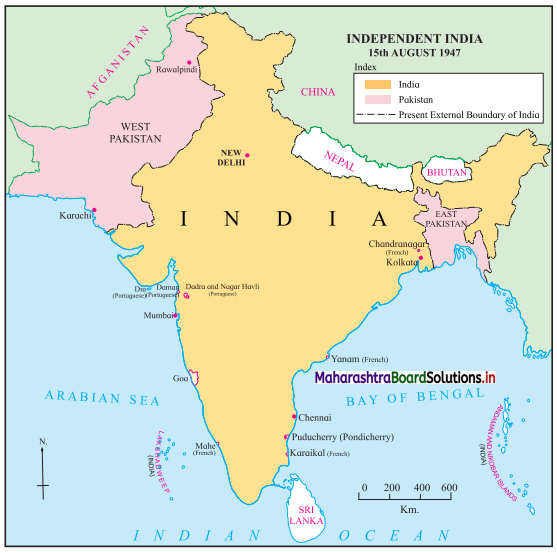
Question 1.
Name the countries located at the northwest border of India.
Answer:
Pakistan and Afghanistan.
Question 2.
Which places in India were the centers of Portuguese rule?
Answer:
Goa, Dadra and Nagar haveli, Diu and Daman.
![]()
Question 3.
Which place on the eastern coast of India were the centers of French rule?
Answer:
Puducherry, Yanam and Karaikal.
Question 4.
Which nation is located at the southern tip of India?
Answer:
Sri Lanka
4. Complete the following concept map.
Question 1.
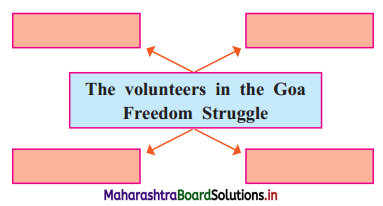
Answer:
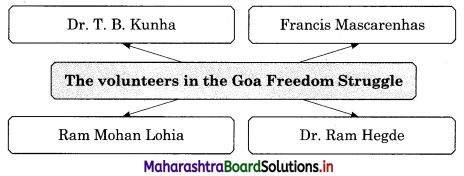
5. Explain the following statements with reasons.
Question 1.
Ultimately the princely state of Hyderabad was merged in India.
Answer:
- Hyderabad was under Nizam rule, it was the largest amongst princely states along with Telugu, Kannada, and Marathi regional sections.
- The various organisation was formed to fight against Nizam’s policies for his people.
- Swami Ramanand Tirth alongside loyal workers were leading this organisation to gain freedom from the Nizam.
- Hyderabad State Congress passed a resolution that Hyderabad will merge in India and this was not liked by Nizam, he was willing to join Pakistan.
- The people of Hyderabad wanted to merge in India.
- Kasim Razvi formed a ‘Razakar’ organisation against people.
- In the end, the Indian Government launched a police campaign against Nizam, under the name ‘Operation Polo’.
- In 1948 Nizam surrendered and Hyderabad merged in India.
Question 2.
Puducherry was declared as a Union territory.
Answer:
- Puducherry was under the French colony. India was under the impression that the British and Portuguese will send a message to the French to leave India, however, this did not happen.
- Puducherry, Mahe, Yanam, and Chandranagar in West Bengal were under French control.
- The people of Puducherry got united under Subbayya, a communist politician and leader.
- The government noticed it as serious and strongly demanded that French governments should return all the regions held by them.
- In 1948, a bilateral agreement was signed by both governments. In 1949, Chandranagar was merged.
- In 1954, all French colonies were merged in India. In 1962, the French Parliament approved the bilateral agreement and in 1963, Puducherry became the ‘Union Territory’ of India.
6. State your opinion.
Question 1.
Andhra, Karnataka, Maharashtra Councils (Parishad) were found in the princely state of Hyderabad.
Answer:
- Hyderabad was the largest amongst princely states in India. It comprised Telugu, Kannada, and Marathi regional sections. It was ruled by Nizam.
- Nizam of Hyderabad had put many restrictions on the Civil and Political rights of his subjects to a great extent.
- To fight against such restrictions in the state, people had formed organizations like ‘Andhra Parishad’ in Telangana, ‘Maharashtra Parishad’ in Marathwada, and ‘Karnataka Parishad’ in Karnataka.
![]()
Question 2.
The Portuguese rule in Goa remained untouched till 1961.
Answer:
- Goa was under Portuguese control. There prevailed a general notion among Indians that the departure of the British from India would send a signal to the Portuguese and the French to leave India on their own.
- However, this did not happen and many freedom fighters like Dr. Ram Manohar Lohia, Dr. Kunha, and many more have contributed to the struggle against the Portuguese.
- At last, the Indian govt has sent the army, under Operation Vijay, to make Goa free from Portuguese control and became a part of India on 19th December 1961.
Class 12 History Chapter 7 Decolonisation to Political Integration of India Intext Questions and Answers
Try to do this (Textbook Page No. 58)
Try to collect information about the newspapers published during ‘Hyderabad Freedom Struggle’ with the help of the internet.
Answer:
Students should do it on their own.
Try to do this (Textbook Page No. 60)
Collect information about the fort of Panaji and make a poster about the fort.
Answer:
Students should do it on their own.
Project (Textbook Page No. 62)
Collect information about the ‘Gorta Massacre’ a very important instance in the struggle for liberating Hyderabad. To get more information about it visit the following website: www.bhausahebumate.com
Answer:
(i) As we know Qasim Razvi, had founded the Razakar organization (Nizam’s private military) to help Nizam to suppress the voice of people against Nizam of Hyderabad. Gorta was the name of a village (Karnataka) and people were massacred by Razakars of Hyderabad in 1948. Gorta Village is also known as Jaliyanwala Bag of Karanataka, it was a mass killing on May 9th and 10th 1948. Though a plaque kept in front of the village gives fight date May 5th, and it continued for two weeks. It is said that around 200 people were killed by Razakars and property destruction was worth ₹ 70 lakhs.
![]()
(ii) A folk song called ‘Bhulai pada’ sung by village women in bitter memory of the massacre. There is demand from village people in front of the Government for the construction of the memorial at Gorta. Local people and local political parties had collected ₹ 27 lakh for a 35-foot memorial and laid the foundation on September 17th, 2014.
Maharashtra State Board 12th Std History Textbook Solutions
- Renaissance in Europe and Development of Science Class 12 History Textbook Solutions
- European Colonialism Class 12 History Textbook Solutions
- India and European Colonialism Class 12 History Textbook Solutions
- Colonialism and the Marathas Class 12 History Textbook Solutions
- India: Social and Religious Reforms Class 12 History Textbook Solutions
- Indian Struggle against Colonialism Class 12 History Textbook Solutions
- Decolonisation to Political Integration of India Class 12 History Textbook Solutions
- World Wars and India Class 12 History Textbook Solutions
- World: Decolonisation Class 12 History Textbook Solutions
- Cold War Class 12 History Textbook Solutions
- India Transformed Part 1 Class 12 History Textbook Solutions
- India Transformed Part 2 Class 12 History Textbook Solutions

